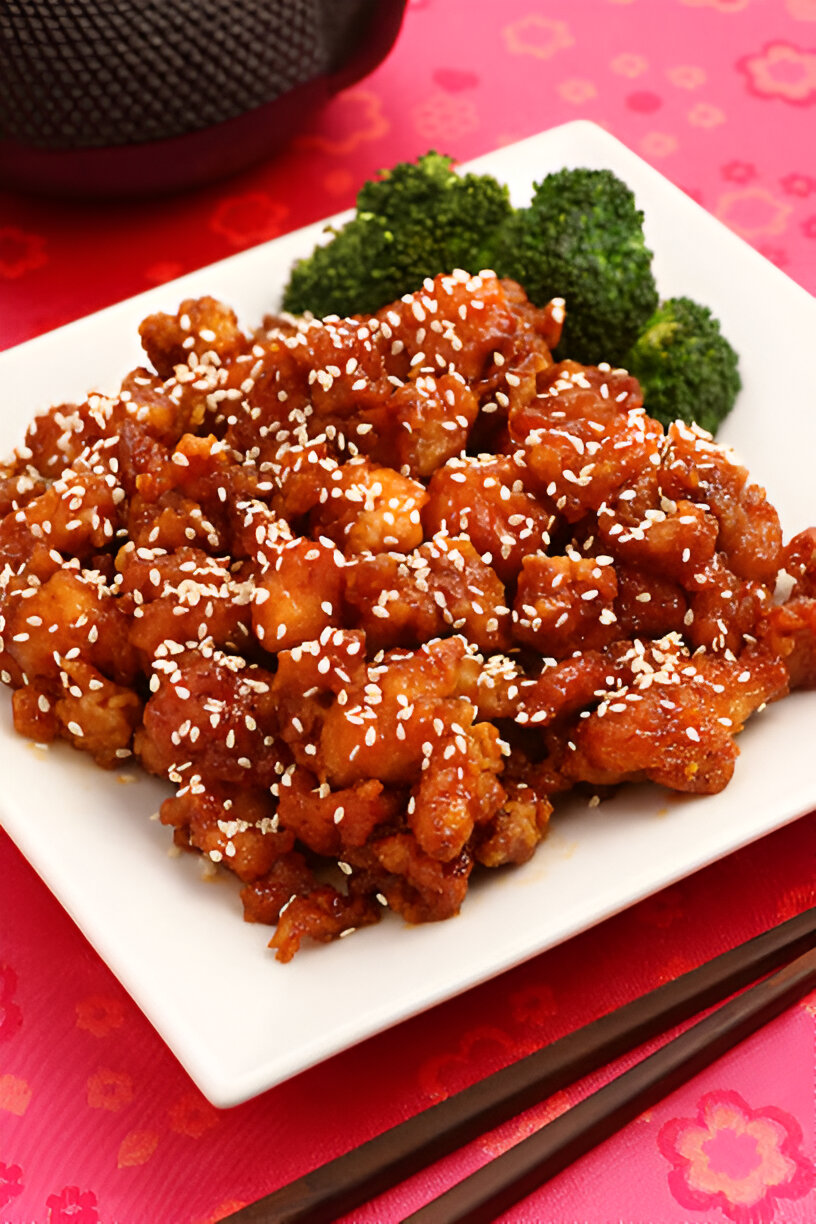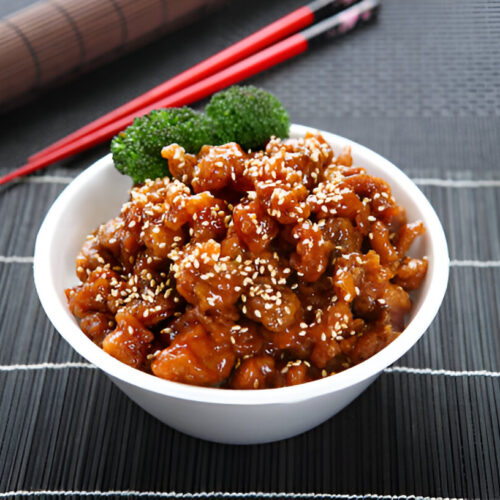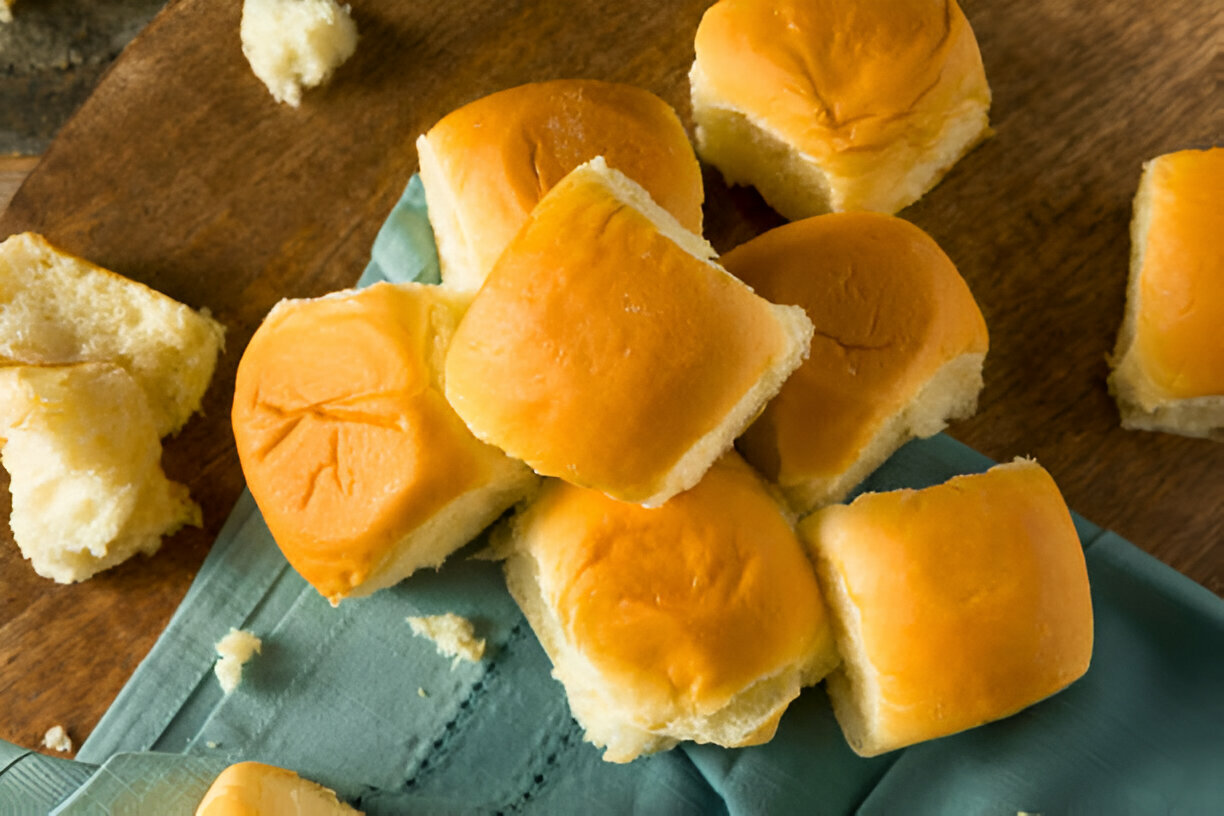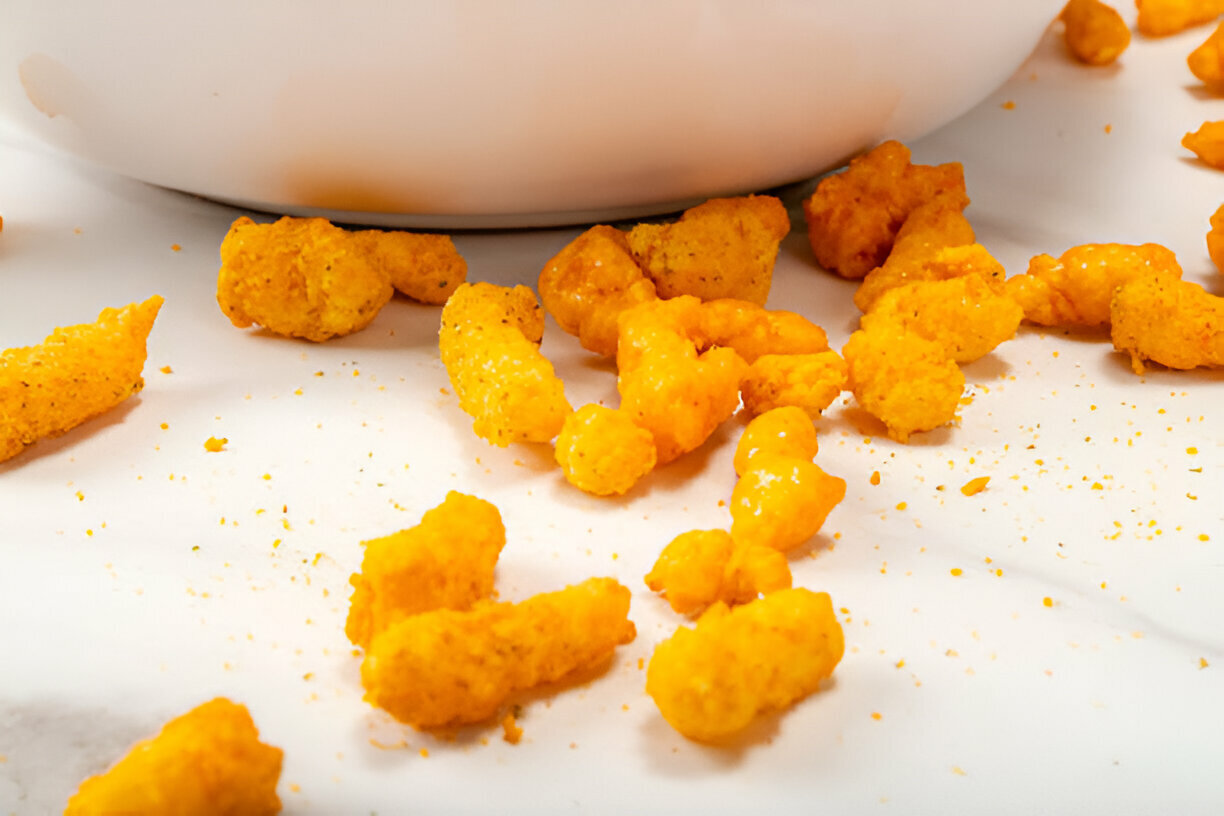Sеsаme chіcken is a dish many people love around the world . Its pieces of chicken is crispy and covered in sweet sauce and sprinkled with sesame seeds . People enjoy the crunch , the flavor and how easy it is to eat .
The dish came from old Chinese cooking ways where sesame seeds and oil were used for taste and smell . No one knows exactly when it first showed up , but people mix it up with soy sauce and sugar or honey . When Chinese cooks moved to the US , they made the recipe sweeter and lighter to suit local taste .
Today , sesame chicken is more than just food . It stands for how old Asian cooking meets newer American styles . You find it on menus and on dinner tables as a comfort meal that almost every one enjoys .

What is Sesame Chicken ?
Sesame chicken has small bits of chicken , usually thighs or breast meat , that are dipped in a batter , fried till golden , and then coated in sauce . The sauce is a mix of sоy sauce , sugar or honey , rice vinegar , and sesame oil . When you shake on sesame seeds , you get that crunch and nuttiness in every bite .
The main ingredients are chicken , cornstarch , flour , eggs , soy sauce , honey or sugar , rice vinegar , sesame oil , and sesame seeds . Mix them right and you get sweet , salty , and nutty flavors all together . The sauce is thick so it sticks to the chicken nicely .
In China , sesame chicken tends to be less sweet and sometimes has more vegеtables . But in the US , cooks usually sweeten it more and fry the chicken twice for extra crisp . Both ways taste good , just in different styles .
You can get protein from the chicken and healthy fats from the sesame oil and seeds . Just watch out for the sugar in the sauce if you want to keep it healthy .
History of Sesame Chicken
People first used sesame seeds in Chinese cooking for their flavor and smell centuries ago . Over time , cooks tried new ideas and made dishes with sesame oil and seeds . Sesame chicken grew from those recipes .
When Chinese chefs came to America , they adjusted the recipe to the sweet tastes many people liked here . It became a hit in the mid to late 1900s and soon was on most Chinese-American restaurant menus .
Different places put their own spin on the dish by changing sauces or adding veggies . This shows how food moves with people and how tastes change over time .

Ingredients for Sesame Chicken
- 1 lb boneless , skinless chicken (thighs or breasts)
- ½ cup cornstarch
- ¼ cup all-purpose flour
- 2 large eggs
- ¼ cup sesame oil
- ½ cup soy sauce
- ¼ cup honey or sugar
- 3 tablespoon rice vinegar
- 2 tablespoon sesame seeds
- Optional: green onions for topping
- Spices like garlic and ginger if you want
You can swap almond flour for a gluten-free option or use agave nectar instead of honey if you need it vegan . Just remember the sesame oil and seeds give it the real taste , so don't skip them .
Sesame Chicken Recipe
5.1 Ingredients
- 1 lb chicken
- ½ cup cornstarch
- ¼ cup flour
- 2 eggs
- ¼ cup sesame oil
- ½ cup soy sauce
- ¼ cup honey or sugar
- 3 tablespoon rice vinegar
- 2 tablespoon sesame seeds
- Optional: green onions
- Spices: garlic , ginger
5.2 Directions
Step 1: Cut the chicken into bite-sized pieces . Pat them dry with paper towels so they get crispy .
Step 2: Beat the eggs in a bowl . Mix cornstarch and flour in another bowl . Dip the chicken in egg , then roll in the dry mix until it's all covered .
Step 3: Heat the sesame oil in a pan over medium-high heat . Fry the chicken in batches so they don't crowd , about 4-5 minutes each . Put them on paper towels to drain .
Step 4: In a small pot , mix soy sauce , honey or sugar , and rice vinegar . Heat it on medium and stir until smooth . If it's too thin , add a little cornstarch mixed with water to thicken .
Step 5: Add the crispy chicken into the sauce . Stir so each piece is covered . Sprinkle sesame seeds and stir again .
Step 6: Serve hot over rice or with veggies . Top with green onions if you like . Enjoy !
5.3 Tips for Making Perfect Sesame Chicken
- Make sure oil is hot before frying . About 350°F is good .
- Use fresh sesame seeds and toast them if you can .
- Change the sweet or spicy levels in the sauce to your taste .
Variations of Sesame Chicken
- With Vegetables: Add bell peppers , broccoli , or snap peas .
- Healthy Version: Bake chicken instead of frying for less oil .
- Other Proteins: Try tofu or shrimp instead of chicken .
- Vegan Mod: Use plant protein and agave instead of honey .
Sesame Chicken in Popular Culture
Sesame chicken is a go-to choice on many takeout menus . It's often in shows and movies when someone orders Chinese food .
It's talked about along with dishes like General Tso's chicken , showing how Chinese-American food became part of pop culture .
How to Serve Sesame Chicken
- Sides: Steamed rice , noodles , or a simple salad .
- Drinks: A light white wine like Riesling or iced tea .
- Look: Put it in a big bowl with green onions and sesame seeds on top .
Common Mistakes to Avoid
- Frying Too Much at Once: Crowding the pan makes chicken soggy not crispy .
- Bad Balance: Too much soy sauce can make it salty , too much sugar makes it sickly sweet .
- Wrong Cook Time: Chicken needs to reach 165°F inside but not get overcooked .
FAQs
- Best Chicken Part? Boneless , skinless thighs or breasts both work .
- Is it Gluten-Free? Not by default because of flour and soy sauce . Swap in gluten-free versions to make it work .
- How to make it Spicy? Add chili flakes or chopped fresh chilies to the sauce .
- What to Serve With it? Rice , noodles , or a crunchy salad .
- Can it be Reheated? Yes , microwave or warm in a pan with a splash of water .
- Difference from General Tso's? Sesame chicken is sweeter and less spicy .
- Healthy Tips? Bake instead of fry , cut sugar , add more veggies .
Conclusion
Sesame chicken is a fun mix of sweet , savory , and crunchy . It's easy to make at home or grab at a restaurant . Try your own twist and share how you made it .

Sesame Chicken
Equipment
- 1 Wok or large frying pan
- 1 Mixing bowl
- 1 Measuring cups and spoons
- 1 Wooden spoon or spatula
- 1 Baking sheet (optional)
- 1 Oven (optional)
Ingredients
- 1 lb boneless, skinless chicken breasts
- ½ cup cornstarch
- 2 large eggs
- ¼ cup vegetable oil
- ¼ cup honey
- ¼ cup soy sauce
- 1 tablespoon rice vinegar
- 2 teaspoons sesame oil
- 2 cloves garlic, minced
- 1 inch ginger, minced
- ¼ cup sesame seeds
- 2 green onions chopped (for garnish)
Instructions
- Cut the chicken breasts into bite-sized pieces. Place them in a mixing bowl.
- In a separate bowl, whisk together the eggs. Dip the chicken pieces into the egg, then coat them with cornstarch. Shake off any excess cornstarch.
- Heat the vegetable oil in a wok or large frying pan over medium-high heat. Add the chicken pieces in batches, frying until golden brown and cooked through, about 3-4 minutes per side. Remove the chicken and set it aside on a paper towel-lined plate to drain excess oil.
- In the same pan, reduce the heat to medium and add minced garlic and ginger. Sauté for 30 seconds until fragrant.
- In a small bowl, mix honey, soy sauce, rice vinegar, and sesame oil. Pour this mixture into the pan and bring it to a simmer.
- Add the fried chicken back into the pan, tossing to coat the chicken evenly in the sauce. Cook for an additional 2-3 minutes until the sauce thickens slightly.
- Sprinkle sesame seeds over the chicken and stir well. Remove from heat.
- Serve hot, garnished with chopped green onions, over steamed rice or noodles.




